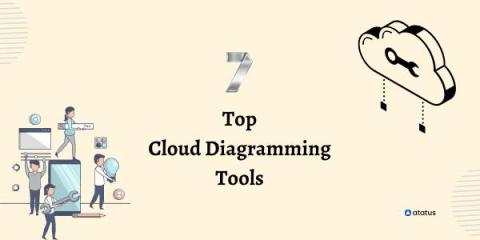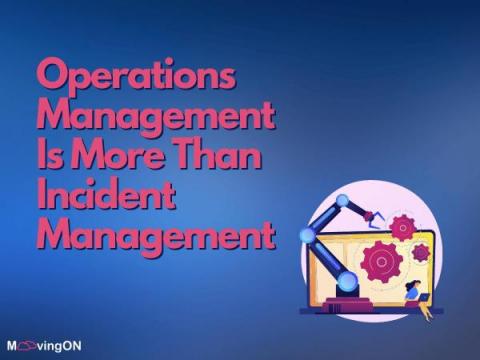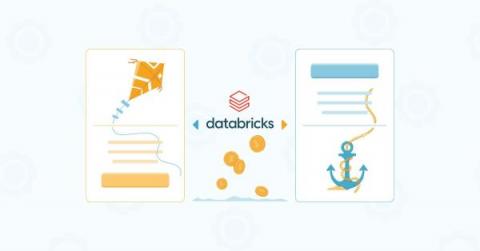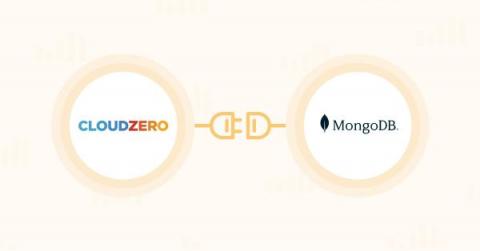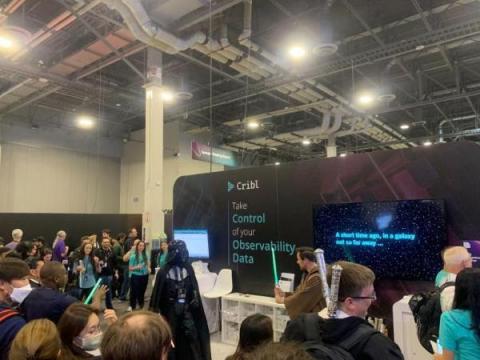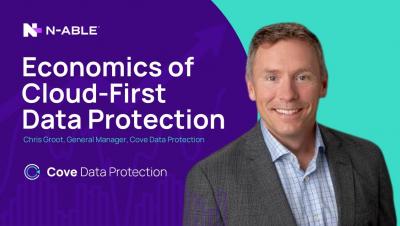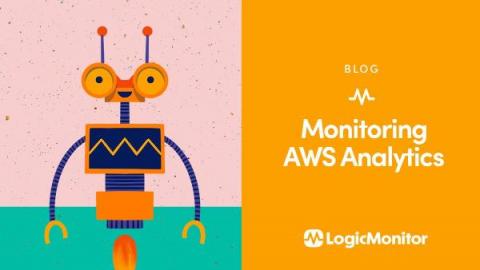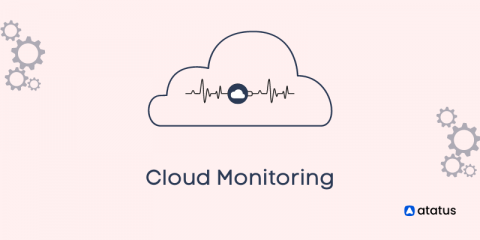Operations | Monitoring | ITSM | DevOps | Cloud
December 2022
Internxt 2022: A Year of Improvement, Growth, and New Services
Serverless360 API Monitor and the Azure Management API
Choosing the Right PaaS System for Your Requirements
Grafana Cloud 2022: Year in review
With every new update and feature we introduced to our open source LGTM stack this year, we have also enhanced Grafana Cloud, our hosted offering that is powered by Grafana Loki for logs, Grafana for visualization, Grafana Tempo for traces, and Grafana Mimir for metrics. With Grafana Cloud, “we have curated the open source experience into an easy-to-use, opinionated, and integrated platform,” Grafana Labs VP of Technology Tom Wilkie said in the ObservabilityCON 2022 keynote.
7 Top Cloud Diagramming Tools
There has been so much uproar about cloud computing in recent years, mostly due to its scalability, capability, and accessibility. Cloud computing is designed to provide constant access to data and applications for users, allowing them to have high bandwidth. Cloud architecture pertains to the diverse components, such as servers, software functionalities, and software solutions, used by all businesses to harness the efficiency of cloud resources.
Edge Computing vs. Cloud Computing and What It Means For Your Environment
AWS: How to Deploy D2iQ Kubernetes Platform
Optimizing BAM Performance with API Management
Qovery now supports AWS STS: Protect your resources with temporary access keys
Metrics For Investigating Network Performance Issues
When the world went remote in March 2020, cloud technologies made work possible. Rapid digital transformation changed everyone’s jobs, whether in-office, remote, or hybrid. Today, your business relies on network speed for everything from productivity to customer service. Keeping your company’s services running means you need to make sure you have low-latency connectivity across data centers, users, and cloud.
A Guide to On-Premises and Cloud-Based Cisco Networks
Operations Management Is More Than Incident Management
To many, incident management and operations management may seem similar though they differ significantly. This difference, which lies in their end goals, also suggests that operations management is much more than incident management. To better understand why, it helps to look at the purpose of each one.
The Differences Between Cloud Backup vs. Cloud Sync & Storage
Today, businesses rely on the cloud to help with many tasks, from data backup to team collaboration. In fact, Zippia’s 2022 cloud adoption statistics reveal that 94% of enterprises use cloud services, and 48% of businesses choose to store their most important data in the cloud.” Discover the differences between cloud backup vs. cloud sync and storage in this post.
Optimizing Azure Cost with Azure Cost Management
A Guide to Stack Overflow's Path to the Cloud
Dashboard Fridays: Sample Azure Application Insights Dashboard
Spot Eco for Azure Now Supporting Savings Plans, Pay as You Go, and MCA Accounts
4 Common Obstacles To Managing Microsoft Azure Costs (And How To Overcome Them)
Optimizing the AWS CloudWatch Log Process
Zero-Friction AWS Lambda Instrumentation with external extensions
If you’ve been in the software business for some time, you’ve probably noticed that creating software isn’t only about adding features. There are usually many different tasks involved. You have to test your system, fix bugs, and ensure it keeps working over its lifetime.
How to Add SD-WAN Devices to Hybrid Cloud Observability
Databricks Pricing Explained: A 2023 Guide To Databricks Costs
Maximizing Cost Efficiency with the JFrog Cloud DevOps Platform
An insider's look at AWS re:Invent 2022
Sysdig Monitor introduces native support for Microsoft Azure Monitor
Microsoft Azure Monitor allows customers to get critical details about their Azure cloud environments and services. The API for Azure Monitor can be a great way for teams to pull this information into their own storage systems for further analysis. However, it can be an overwhelming amount of data to process. Sysdig can help with this problem and eliminate time and effort. Here is how we do it …
Top Reasons Customers Are Moving to SolarWinds Hybrid Cloud Observability
Host a complete Mastodon server on Qoddi for $30 per month (and first month free!)
Mastodon recently became a popular decentralized alternative to Twitter and, more importantly, a way to own your part of a global social network. Mastodon servers can interact with all other fediverse servers (including other Mastodon server). You don't have to own your Mastodon server to get started, you can even join the Mastodon of Qoddi.
Monitoring with Prometheus on AWS EC2
Applications and servers need to be constantly monitored to prevent failure and also be able to detect issues on time. This blog post outlines how developers can use Prometheus to monitor applications on AWS EC2 instances.
Top Five Cloud and Technology Predictions for 2023
The Gartner Top 10 Strategic Technology Trends for 2023 report makes predictions across a number of industries for the coming year. Here are the ones that excite us the most.
What is Redundancy? Protecting the Cloud (And Your Data) From Total Disaster
Boost Your Apache Impala Query Performance with Query Spotlight
Event-Driven Architectures and Cloud DevOps - re:Invent 2022
A comprehensive guide to cloud cost management
With 34% of cloud developers facing difficulties when calculating how much their cloud provider is going to charge them each month, it is essential to prioritize cloud cost management. This concept surrounds the process of monitoring, controlling, and optimizing an organization’s cloud service spend. By having the correct cloud cost management strategies in place, organizations are able to eliminate unnecessary expenses through optimizing resource allocation and cost-saving strategies.
VMware Tanzu and AWS Accelerate Apps: Key Takeaways from AWS re:Invent 2022
Another successful AWS re:Invent is in the books for VMware Tanzu. This year, like in previous years, the event had a high attendance with 51,000+ people descending on Las Vegas to learn and explore everything AWS-related. However, there were some notable changes in the focus areas for 2022. This year, VMware was pleased to see that Amazon hosted their first-ever Kubernetes Leadership segment at re:Invent, delivered by Barry Cooks, vice president, Kubernetes for AWS.
Launch your own micro cloud with one command
If you are looking for a small-scale cloud deployment suitable for the edge, chances are you came across Canonical’s Micro cloud solution. These are small-footprint clusters of compute nodes with distributed storage and secure networking, optimised for repeatable and reliable remote deployments.
Notification Center: Receive notifications on your Spot console
ElastiCache Pricing Explained: A Guide To ElastiCache Costs
Cloud Migration Tools
The cloud migration tools category is as wide as any other in enterprise IT software. Here we provide an overview of the landscape, and when and how to apply each type of tool to achieve your goals. While the landscape can seem complicated, one thing is clear: There is no silver-bullet to cloud migration tools.
Discover
The key to a successful cloud migration? Accurate discovery of your applications and technology - no guesswork allowed. With Tidal, you can complete this step faster than ever, automatically.
Assess
Tidal provides you with an automated assessment of your software usage, defects, vulnerabilities, and more. You’ll know exactly what to expect before your cloud migration.
What You Need To Know About Hybrid Cloud Kubernetes
Enterprises are increasingly adopting Kubernetes. In fact, Gartner estimates that by 2026 more than 90% of global organizations will be running containerized applications in production, an increase from fewer than 40% in 2020. And IDC reports that 80% of new workloads are being developed in containers.
Kentik Cloud in 20 Seconds
Cloud & observability: hot topics from AWS re:Invent
Repatriation to reduce public cloud spend - easier said than done?
Repatriation in cloud computing refers to moving workloads from the public cloud to on-premise infrastructure. Sarah Wang and Martin Casado from Andreessen Horowitz have written one of the most popular articles about repatriation: they explain the motivation with the significant cost savings possible. For software-based businesses, public cloud spend can rise to 50% of the cost of revenue (COR). Reducing these costs has the potential for significant margin increases.
Monitor your configuration with Terraform state #Shorts
Introducing our new API and Metrics servers upgrades
We are all about providing the best web deployment experience on the market. Working to ensure that our product is delivering the quality we promise with regular product updates and new features being introduced all the time. And that’s exactly why we’re here! We’re delighted to share the new version of our API server and Metrics server, designed to optimize transparency, crons, builds and sources operations control- to name but a few. Ready to find out more? Keep on scrolling.
AI-ght! Exploring the Wonders of ChatGPT and Why AI is Taking Over
How CloudZero's Databricks Support Brings Cost-Efficiency To Your Data Lake House
Root Cause Analysis of Performance Issues for Apps Running on AWS
Understanding Your Amazon EKS Spend
Most customers running Kubernetes clusters Amazon EKS are regularly looking for ways to better understand and control their costs. While EKS simplifies Kubernetes operations tasks, customers also want to understand the cost drivers for containerized applications running on EKS and best practices for controlling costs. Anodot has collaborated with Amazon Web Services (AWS) to address these needs and share best practices on optimizing Amazon EKS costs.
Monitoring and Observability in Azure Services
Can Your Cloud Migration Strategy Keep Up With the Speed of Business?
A hybrid infrastructure brings business benefits but it also brings new challenges. Migrating workloads to the cloud is a complex operation that generates more data than engineering teams can adequately manage. Traditional monitoring tools are limited in helping teams find and fix problems during and after a cloud migration. This can throw business strategies off course, limit customer value and hurt the bottom line.
Quick Bytes - Getting started with Lumigo
Discovering Cloud Environments to Monitor in WhatsUp Gold
How to use monitoring and dashboards with Google Cloud Armor
AWS re:Invent 2022 Recap: What Happened In Vegas ...
AWS re:Invent has come and gone. A great deal of fun was had along with many new insights shared. Here’s a recap from some ScienceLogicians who were in attendance.
Kubernetes and Cross-cloud Service Meshes
As today’s enterprises shift to the cloud, Kubernetes has emerged as the de facto platform for running containerized microservices. And while Kubernetes operates as a single cluster, enterprises inevitably run their applications on a complex, often confusing, architecture of multiple clusters deployed to a hybrid of multiple cloud providers and private data centers. This approach creates a lot of problems. How do your services find each other? How do they communicate securely?
How CloudZero's New MongoDB Support Brings Cost-Efficiency To Cloud-Native Databases
Learn about the meaning and value of cloud-native from experts at Atchison Technology, Qumu, Microsoft, and Techstrong Group
How to set custom policy conditions in your Spot resources
Intro to Hive Queries-What They Are and How to Write Them Effectively
AWS monitoring: Metrics that matter
Amazon Web Services is a major cloud services platform used by companies around the globe. Its cost-effectiveness and high agility has helped brands across all categories, verticals, and sizes scale their services quickly and efficiently. With many organizations now leveraging AWS resources to develop, build, and run business-critical applications in the cloud, it is important to track and monitor the performance of these services in real time to avoid unexpected issues.
Cloud Adoption Set To Accelerate in Africa
FinOps Vs. The Old Way: How Cloud Cost Optimization Is Evolving
Cribl at AWS re:Invent 2022: Spoiler Recap!
What do you get when you throw 50,000 attendees together with Darth Vader and Obi-Wan Kenobi in Las Vegas? Lightsaber battles and demos from Cribl Jedis fighting for the liberation of customer data from vendor lock-in, of course! AWS re:Invent 2022 was a total hit this year and we had such a great time showcasing to AWS customers how easy it is to realize the full potential of the cloud by unlocking data first. The week was full of exciting new launches, talks, happy hours, and more!
Kubernetes Federated Clusters on AWS
This blog will discuss federated Kubernetes installations. Why and when we should use them and provide a working example of such a setup on AWS’s EKS. This blog post includes working code examples. As engineers with a never ending task list – which only grows as we strive for the next best thing we can add to our system – context is vital.
M5 Instance Types 101: The Definitive Guide For 2023
Recapping this year's AWS re:Invent 2022
Amazon recently concluded their five-day long conference, AWS re:Invent 2022. This year’s conference was hybrid with the company streaming a significant portion of their in-person conference for free. For ten years now, the event has seen attendees across the cloud continuum come together to learn, share and get inspired. This year was no different as we saw some of the biggest names in cloud computing make their presence felt at the conference in Las Vegas.
MoovingON and 2bcloud form U.S. Strategic Partnership, Elevating CloudOps Automation to Never Seen Before Benchmarks
MoovingON and 2bcloud Form U.S. Strategic Partnership, Elevating CloudOps Automation to Never Seen Before Benchmarks
BigQuery: Manage your workloads
PHP 8.2 lays new ground on Platform.sh
Today is the official release of PHP 8.2. And you can already use it on all your Platform.sh projects, with a single code change in your.platform.app.yaml: type: php:8.2 Try it out today! PHP 8.2 introduces some pretty cool new features including: Here’s a quick breakdown of each new feature and how they ought to make things easier for you.
The Hidden Costs of Serverless Observability
The growing popularity of serverless architectures has led to an increased need for solutions to the modern challenges of microservice observability—one of the most critical components for running high-performing, secure, and resilient serverless applications. Observability solutions have to break through the complexity of serverless systems, and with the right stack, observability enables not only fast and easy debugging of applications, but drives optimization and cost efficiency.
Channel Icons on MSPs in 2023 and Owning the Cloud
Kubernetes Observability 101: Tools, Best Practices, And More
[Fast Chat] AWS EKS + D2iQ: Better Together
What's New and Coming to Spot PC (November 2022)
Serverless roundup at AWS re:Invent 2022
AWS re:Invent was back and BIG last week in Las Vegas. Approximately 50,000 AWS customers and partners got together in Las Vegas to learn, talk shop, and maybe attend a couple of parties here and there. Not only did Lumigo have a booth, but our own Saar Tochner, R&D Team Lead and AWS Community Builder gave a well-received talk on Lambda extensions.
The Economics Behind Cloud-First Data Protection
Cloud Monitoring: Troubleshoot misfired alerts
Highlights from AWS re:Invent 2022
Just like shopping on Black Friday, AWS re:Invent has become a post-Thanksgiving tradition for some of us at Datadog. We were excited to join tens of thousands of fellow AWS users and partners for this annual gathering that features new product announcements, technical sessions, networking, and fun. This year, we saw three themes emerge from the conference announcements and sessions.
Don't be held to ransom: Security awareness with Platform.sh
Ransomware is an ever-evolving type of malicious software (a.k.a malware) in which an attacker encrypts the files on a victim’s device, rendering it inaccessible and unusable. Then - you guessed it - they demand a ransom from the target before they’ll fix it. Not something any organization ever wants to deal with, and not something any organization has to deal with if they have the right measures in place to minimize the risk. Let’s talk about how!
5 Things Dimensions Can Do That Regular Tagging Can't
One Cloud 66, One Product
We started Cloud 66 with a single product to deploy any Rails application to any cloud. Then, in 2014, we introduced Cloud 66 for Node; in 2015, Cloud 66 Maestro v1, 2016 Cloud 66 Maestro v2 (Kubernetes), 2019 Cloud 66 Skycap, and finally, Cloud 66 Prepress (Static Sites) was released in 2022. All these products exist to serve a single purpose: deployment of any application to any cloud. Today we are making it easier to do that: we are consolidating all our products into one: Cloud 66!
Monitor all your cloud services in Datadog with IsDown
In this article, we will explain how you can monitor all your cloud service status pages in Datadog with the help of IsDown.
Three Key Considerations for Deploying Best-of-Breed Observability | AWS reInvent 2022, Ed Walsh
Cloud Marketplaces: How to Move "Tail Spend" to "Strategic Spend"
How Technological Advancements Rapidly Influence Our Internet Connections
Multi-cloud vs. hybrid cloud networks: What's the difference?
In today’s digital landscape, application demands such as scalability, performance, and reliability push many IT organizations toward cloud-based networks. Initially, cloud providers’ main offering was managed, virtualized data storage and services, or cloud computing. As cloud ecosystems have matured, so have the tools, services, and use cases available to their customers.
DERDACK SIGNL4 for Microsoft Sentinel, Defender for Cloud and more
Monitoring AWS Analytics and Services for Business Continuity
GitHub Action to deploy StackStorm to AWS
StackStorm is a powerful automation engine, but has a lot of moving pieces, configuration details, corner cases, and a steep learning curve. Many compare st2 with K8s and, indeed, you can spend weeks stitching things together to make the StackStorm installation and configuration pipeline fit your specific needs. Then you start benefiting from automation!
Resource Guide for InfluxDB and AWS
InfluxDB Cloud runs natively on AWS. This is great for users that already rely on AWS because it keeps everything (or at least most things, hopefully!) in one place. This can also reduce data latency, if the region you use is geographically close to your data sources. Plus, it’s super easy to get started using InfluxDB on AWS. One of the great things about AWS is that it has a ton of different services and features that allow you to do more with your data.
Cloud Monitoring: A Complete Guide
Cloud monitoring is the process of tracking, reviewing, and managing the health and security of cloud-based systems and applications. Cloud monitoring is essential for any organization that relies on cloud-based applications and services. It provides visibility into the performance of these systems and can help identify potential issues before they cause downtime or data loss.
Production testing: smoke tests with Cypress, CircleCI, and AWS
“Testing your production environment” refers to the practice of running tests on production servers, using actual data from real users. Production testing doesn’t replace other methods like unit or integration testing. Instead, it extends them. Smoke testing is one approach that Lumigo has implemented to test our own production environments.
Discover Database Servers In 3 Steps
I recently had a cloud migration client who was at the beginning stage of their discovery phase and looking to jump straight to “which database platforms should I be using in the cloud?” - a tall ask you might say, but following the three steps below they were able to discover and analyze all of their database servers in just two weeks.








